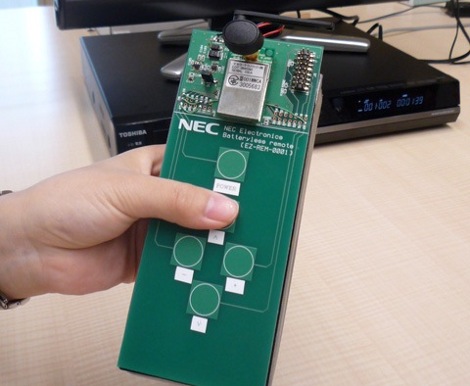How often do you change the batteries in your television remote control? Yeah, basically never. But that’s a tribute to how efficient the device is and not a reason to overlook this development. NEC is showing off a remote control that uses no batteries. Power is generated using the piezo effect that occurs when a button is pushed. That is to say, when a crystal is compressed it emits a tiny bit of electricity which is harnessed and used to power this device. This is the same principle that is used in the electricity producing sidewalks tested in Japan.
It’s pretty phenomenal that they can run the device using this method. Right now there’s only a handful of buttons but we’re sure there’ll be advances in the technology. There’s a ton of use for this if it can be miniaturized. It is using radio frequency instead of infrared, making it a useful development in wireless doorbells, garage door openers, key-less entry fobs for your car, and many more applications.
[Thanks das_coach]

















